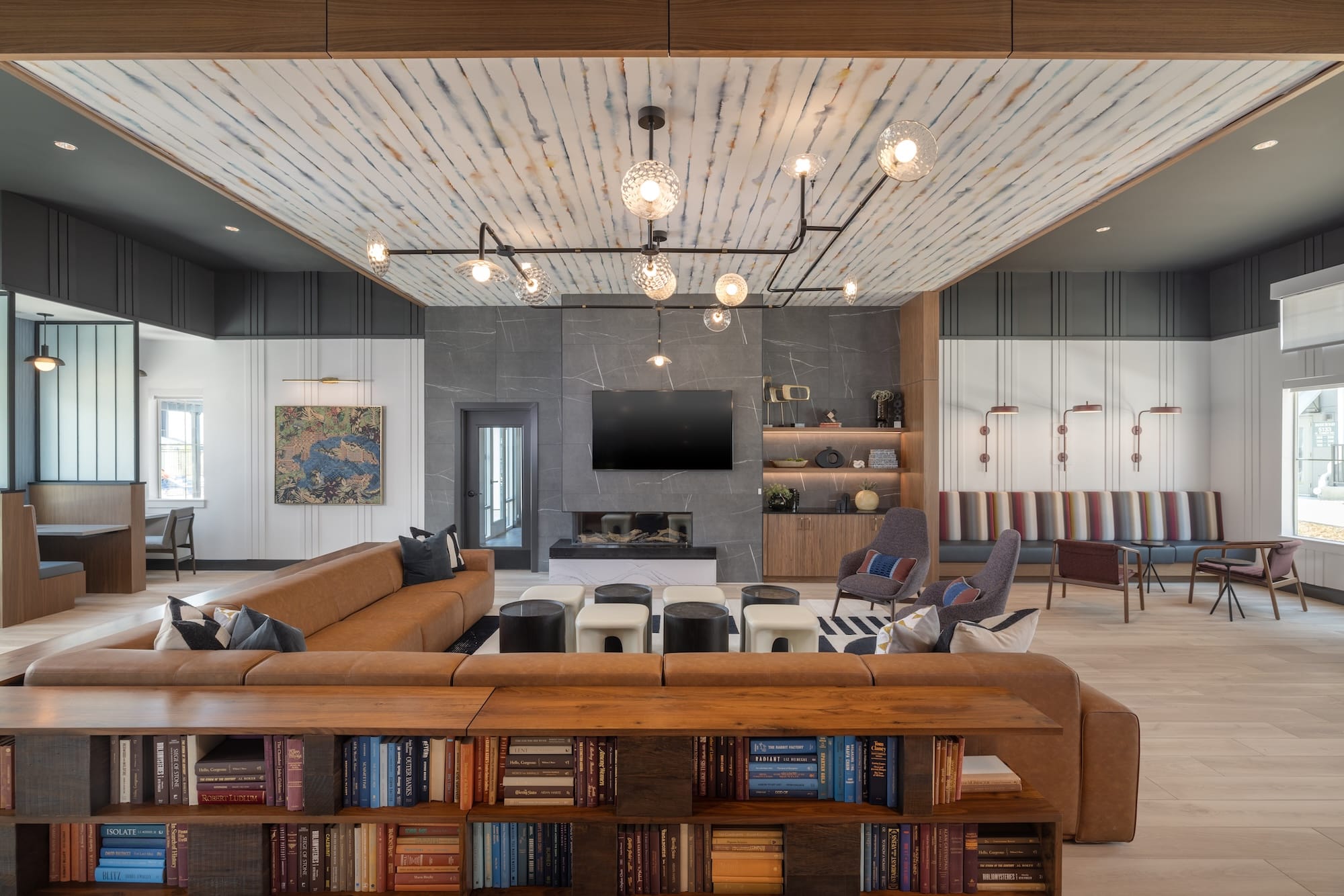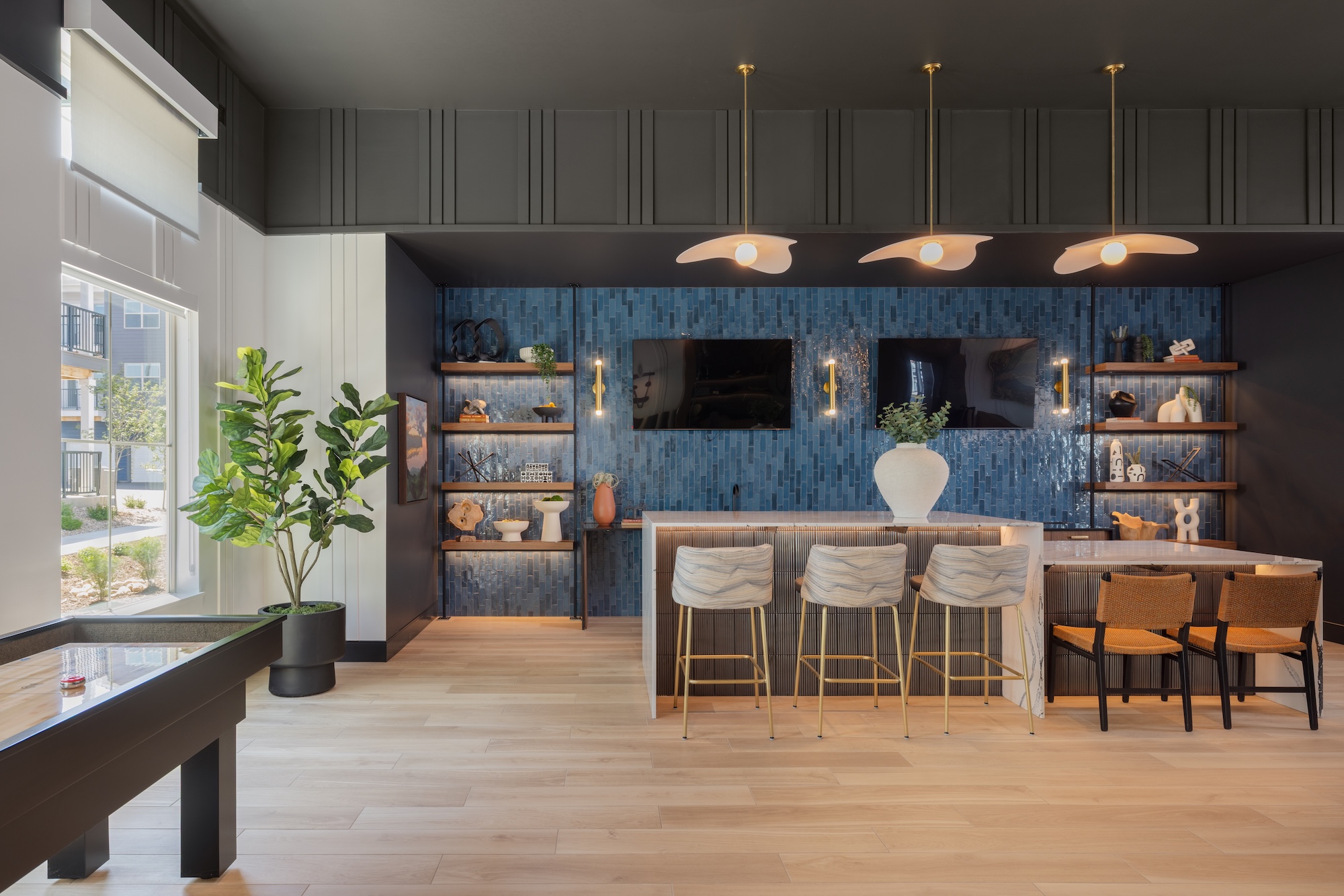The Studio 10 Difference: The Crucial Role of Interior Design in Enhancing Resident and Client-Centered Experiences
As the residential and hospitality markets navigate a complex landscape shaped by economic fluctuations and shifting consumer preferences, the necessity for differentiation has become increasingly crucial. With rising interest rates, evolving tenant demographics, and heightened competition, property developers and owners must adopt strategic approaches that not only attract residents and guests but also enhance profitability. In this context, the role of design emerges as a significant factor in creating desirable spaces that stand out in a crowded marketplace, underscoring – in our opinion – the importance of the Studio 10 Difference.
Where It All Starts – The Current Landscape: Challenges and Opportunities
Despite historically robust performance in high-growth markets, the multifamily sector is currently facing an oversupply challenge. While these markets usually thrive due to increasing demand, the current landscape reveals that available units significantly surpass tenant needs, leading to a temporary imbalance. This excess supply, driven by aggressive development, has created a competitive environment where property owners must strategize to attract residents. Although the market is expected to eventually equalize as demand catches up, the present situation requires developers and owners to adapt to shifting dynamics and rethink their approaches to maintain occupancy and profitability.
Adding to the dilemma, the multifamily market is at a tipping point, with predictions suggesting many properties may soon hit the market—not by choice. A staggering $957 billion of debt is set to mature by 2025, forty-two percent of which resides in the multifamily and residential sector, fueling the potential for distress sales. In recent years, owners have often resorted to an “extend and pretend” strategy to delay decisions, maintaining a “kick the can down the road” mentality and avoiding sales unless absolutely necessary. In this environment, there are plenty of buyers with ample capital but not enough sellers willing to take action, which has led to properties being sold at or below their previous sales prices, ultimately minimizing the turnover of existing assets.
In short, we have an oversupply problem on the development side and a short supply of inventory on the investment side, resulting in an imbalance—or even, at times, a standstill in the market. And let’s not forget the buzz words “uncertainty” and “tariffs” lurking in the background.
While the market is tricky, it’s important to consider that as Millennials and Gen Z delay homeownership due to rising interest rates and living costs, their presence in rental markets persists. Developers and owners must adapt to this demand by crafting properties that resonate with a demographic that prioritizes amenity-rich lifestyles. Looking ahead, it’s not all doom and gloom; the next twelve months theoretically present more favorable conditions—provided that the labor market remains stable and supply shortages are effectively addressed. While some bumps in the road are anticipated, especially as lease rollovers peak in September, calculated strategies and proactive adjustments can help the industry navigate these transitional phases—especially with the right partnerships in place.
It’s worth noting that while much has been said about the residential market, the hospitality sector isn’t exempt from high interest rates, tight margins, consumer needs, and the age-old calculation of “Does it pencil?” Even more pertinent today is keeping pace with consumer likes, desires, and values—and once again, design plays a key role.
The Impact of Design on Asset Differentiation
In this competitive environment of oversupply and options, design plays a pivotal role in differentiating residential and hospitality assets. Thoughtful design creates functional, aesthetically pleasing spaces that enhance the user experience. Properties that prioritize resident and guest comfort through intelligent layouts, quality materials, biophilic design elements and appealing aesthetics cultivate a sense of belonging and well-being, fostering tenant retention and loyalty.
Moreover, strategic design generates additional revenue streams. Unique amenity spaces—like grab-and-go markets, innovative package delivery systems, co-working areas, fitness studios, and social lounges featuring community engagement programs—can attract a broader range of clients and residents. Furthermore, aligning design with flexibility allows spaces to adapt to various activities, maximizing value and making properties more attractive amid rising competition while reducing long-term operational costs.
The Shift Toward Acquisition and Repositioning
Given current market trends, competition for available properties is intensifying. As new development costs continue to rise, the acquisition and repositioning of multifamily and hospitality assets have emerged as effective strategies for owners aiming to stand out while managing expenses. By transforming existing properties into unique, boutique offerings, owners can attract discerning tenants while retaining current residents and clientele.
In this context, having a vertically integrated, turn-key design partner becomes even more crucial. Teams that streamline processes and deliver a comprehensive, one-stop solution enhance the profitability of assets by ensuring timely project completion within budget constraints. Furthermore, this approach significantly reduces the number of communication channels, simplifying coordination and improving overall efficiency.
Creating Experiential Spaces in a Divided Market
In today’s rental and experiential market, a distinct divide exists between the “haves” and the “have-nots.” Discerning tenants are increasingly drawn to spa-like amenities, high-end finishes, and beautifully curated environments—expectations mirrored by hotel guests and restaurant enthusiasts searching for the next premier destination. Consumers are constantly on the lookout for bigger and better experiences. For property owners and developers, prioritizing the quality of amenities and space can have a far greater impact than simply increasing square footage—and it can also lead to cost savings. Smaller, thoughtfully designed spaces can create a more upscale ambiance than larger ones when executed effectively.
In the ongoing “amenity war” among developers, the strategic utilization of amenities is essential; outstanding spaces are defined not only by their extravagance but by the lifestyle choices they promote and the communities they help cultivate. To achieve this, it is critical to partner with a design team that understands the specific needs of residents or guests, as well as the spatial dynamics and demographics they serve.
Now for the Difference: The Studio 10 Difference
While many emphasize the importance of strategic partnerships, these collaborations play a crucial role in the success of any project. As highlighted throughout this article, remaining competitive and relevant in today’s market requires more than just a fresh coat of paint and stylish pillows. This is precisely what we define as the Studio 10 Difference.
At Studio 10, we take immense pride in our comprehensive approach to interior design, whether it’s for new developments or the renovation of existing assets. We meticulously oversee every step of the process, from the initial concept to seamless implementation.
Our 10-Step Process ensures that each decision aligns perfectly with the project’s vision. Drawing from our extensive experience in design, construction, and project management, along with a commitment to high standards, we developed this process to not only streamline our operations but also establish clear expectations with our clients. This proactive approach introduces a level of predictability in a market that can often be unpredictable.
While flexibility and agility are essential, adhering to our proven principles and structured process is equally important in leveraging our expertise in high-quality design. The collaborative partnership we provide is vital for achieving the elevated standards expected in today’s commercial spaces—many of which we’ve discussed in this article. With Studio 10’s unwavering commitment to excellence, we navigate complexities with ease and deliver impactful results that genuinely make a difference in a competitive market.
Conclusion: The Path Forward in a Complex Market
As we navigate the complexities of the current economic landscape, it is clear that interior design plays a crucial role in the success of commercial properties. Ultimately, it’s what people actually see and experience that counts. The challenges facing the residential and hospitality sectors—from rising interest rates to shifting consumer preferences—demand thoughtful, strategic responses from owners, developers, and partners alike.
A partnership grounded in core principles such as Driven, Curated, Elevated, and Connected—see what we did there—enables teams to make informed decisions that propel projects toward success. As a design firm, we understand the importance of early involvement in the planning process, emphasizing communication and collaboration with branding experts, architects, and general contractors. By nurturing these relationships, we create workflow efficiencies and ensure that each decision enhances the overall project vision.
As market trends continue to evolve, those who invest in high-quality, well-designed spaces that resonate with the aspirations of today’s tenant demographics will reap the rewards. With close attention to detail, a focus on strategic amenities, and an unwavering commitment to excellence, owners and developers can cultivate dynamic, engaging environments that not only meet residents’ demands but also elevate their overall living experience.
In closing, while the road ahead may be turbulent, equipping ourselves with the tools and partnerships necessary to navigate these challenges is vital. At Studio 10, we are committed to being that partner—transforming challenges into opportunities through exceptional design, open communication, and consistently delivering high-quality results. Together, we can create spaces that not only function remarkably well but also enrich the lives of the people who inhabit and experience them, ensuring that commercial properties remain desirable and successful investment vehicles in an ever-changing marketplace.
As we move forward, let us champion the role of interior design as a vital contributor to the success of commercial properties, creating spaces that not only look good but also foster community and enhance the overall user experience—aligning perfectly with the needs and desires of today’s discerning residents and clients. The Studio 10 Difference is not merely about aesthetics; it’s about crafting environments that fulfill aspirations and respond to the changing landscape of our communities. Let’s continue to lead the way in shaping the future of commercial real estate through exceptional design and innovative solutions that leave a lasting impact.
Table Of Content



